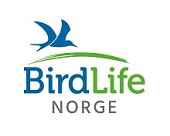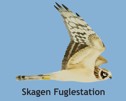
|
|
Population monitoring at Jomfruland and Lista Bird Observatories in 2015
The full report (in Norwegian) can be downloaded: Bestandsovervåking ved Jomfruland- og Lista fuglestasjoner i 2015. By Aïda López Many species that overwinter in tropical areas (especially Willow Warblers and Whitethroat), and some species that winter in Europe and North Africa (as Blackbird and Fieldfare), were caught in low numbers in 2015. Some sedentary and irruptive species, such as Blue tit and Great tit, were also caught in low numbers. This is due to the poor breeding season, as the spring was dominated by high rainfall and low temperatures in May and June. The annual ringing results were, however, somehow compensated by a record incidence of Goldcrest. This species is generally the most abundant ringed species during autumn at Jomfruland Bird Observatory. In 2015, the number of Goldcrests ringed at Jomfruland and Lista was the highest since 1993. The species occurrence has been increasing since 2009 (see Figure 1). The report also shows that most of the passerines studied on this report arrive earlier in the spring than they did in 1990, probably due to climate change. On Figure 2, it is possible to see the changes in arrival (blue) and departure (orange) for Redstart, using Julian dates (1=1 January, 110=20 April, 270=27 September). Temperature, rainfall and wind speed is expected to increase in Norway during the next years. Arrival and departure times in spring and autumn are for many bird species directly linked to food availability, temperature and access to nesting sites. Therefore, changes in the arrival and departure times also change the time of nesting, breeding success, survival, distribution and population size of many bird species. | ||||||

| Ringing numbers | ||||||||||
|
| Reportasje fra Lista FS i Aftenposten |

|
| Seasonal deviation | ||||||||||||||||||||||||||||||
|
|
Følg Følg Lista FS på facebook.com |
| Siste 5 på siden |
|
Begynnerkurs i ringmerking: 17.-18. august The annual report for 2023 is available! Fuglefestival 2.-3. september Report from spring 2023 Ny rapport: Måling av elektromagnetiske feltstyrke fra fugleradar ved Lista fyr. |
| Nyheter fra NOF |
|
Kraftlinjer og vindmøller... Lille måltrost og den enda... Fine hekkeflåter til ternene... Statsforvalteren sier nei til... Hotell i særklasse Tusenvis av svarttrost: Hvor... Kulturlandskapsarten... BirdLife Norge reagerer på... |
Lista Fuglestasjon
Fyrveien 6
NO-4563 Borhaug
post@listafuglestasjon.no Tlf: 949 86 793
 |  |


 Only in English
Only in English



